
Technology
With AI in Indian iPhones, can Apple rival Google’s appeal for coders? – Crypto News
The move may pose a challenge to Google’s significantly larger technology ecosystem, which saw the Android operating system platform power over 92% of the new phones that were sold in India last year.
Between them, Apple and Google cumulatively control more than two out of every three consumer gadgets in the world. And, for the Big Tech duo, India’s developer base is crucial to offer its users the latest suite of applications. Data from Microsoft-owned GitHub, the world’s largest platform for developers, showed that as of October, India was the world’s second-largest base for developers worldwide, behind only the US, with 17 million active developers building apps for various platforms.
Having control over the developer ecosystem is crucial for both companies, which earn significant revenue by selling applications on their digital marketplaces—Apple’s App Store and Google’s Play Store. Getting more developers to build for their ecosystems would mean more apps for users to use and purchase—thus leading to more revenue for each company.
While neither disclose app-specific revenue, Apple earned $26.3 billion from ‘services’ in the December quarter, which included revenue from its applications marketplace. During the same period, Google earned $11.6 billion from ‘subscriptions, platforms and devices’, which are driven by its earnings from apps.
Also read | How the iPhone 16e might help Apple log record sales this year
Cumulatively, app developers, therefore, directly or indirectly account for nearly $100 billion in annual revenue for Apple and Google.
Further, roping in developers into their AI initiatives is key since this helps the two companies monetize investments that they have made in developing AI models—a capital-intensive task.
Apple’s generative AI features include sorting photographs and videos on a device with text instructions, a wider range of queries through Apple’s on-device digital assistant ‘Siri’, contextual grouping of notifications, text and message summaries, live transcription of phone calls, object recognition and more.
While the suite of features is similar to what Google already offers, its overall prospect is a strong pull for developers. Globally, the Cupertino, California-based company had over 2.35 billion active devices as of the end of last year, chief executive Tim Cook said in Apple’s December quarter earnings call. This gives developers one of the world’s single-largest technology ecosystems to build applications for.
Google is even more appealing. Data from open-source statistics platform StatCounter said that at the end of last year, Google’s Android accounts for 73% of 7.2 billion smartphones worldwide, and 47% of all devices around the world—thereby making Google a point for developers to access over half the world’s population.
It is this that makes the latest developer showdown an exciting one.
“Apple’s AI developer tools are entirely free to access for now, and third-party developers in India can start accessing them now to build Apple Intelligence into their apps for iPhones, iPads and Macs. Being an early-mover in this space will be key for developers, since integrating with Apple’s ecosystem will help developers tap into an early interest in AI features from users, as iPhone users in India get access to AI features for the first time in April,” said a senior web development executive who works closely with Apple, requesting anonymity due to their working clause with the company.
Also read | Budget smartphones sell like hot cakes in tepid market
Google, meanwhile, has a multi-tiered approach to AI on phones. The Mountain View, California-based company offers open-source, lightweight AI models and associated tools under its ‘Gemma’ umbrella for free to developers to build applications that do not need access to large ‘context windows’, or AI-integrated apps that have a small set of tasks in a limited scope of usage. Meanwhile, its Gemini suite of developer tools have both free and paid pricing tiers, with large-scale apps seeking to tap users at scale almost compulsorily needing to pay some fee to Google for its tools.
“It’s a simple rationale—if you make money, you must pay a fee, and that’s not really unfair. After all, Google is commercializing its AI models and tools, and will hope to see increasing returns from AI operations in the long run. For now, this is the phase where Google will look to build a big user and developer base, so it makes sense that while smaller models and tools are free, premium features such as the ability to handle bigger queries are paid features,” said Kashyap Kompella, AI analyst and chief executive of technology consultant RPA2AI Research.
For Apple, keeping its AI tools free is important because of how it fundamentally differs from Google. To be sure, Apple’s software is not used by any other brand. Google, however, licenses its Android operating system to power most smartphones around the world—alongside its own Pixel line of hardware.
“In the long run, we may see Apple bundle a premium AI tier into its ‘services’ offering, which is generating increasing revenue for the company. But until then, it needs developers to integrate its AI features into their applications—only then will it have a robust ecosystem of apps that users won’t feel are underwhelming to Google’s much more open ecosystem,” said Jayanth Kolla, founding partner of technology consultant Convergence Catalyst.
Also read | Online gaming: One nation, one law may blaze a way out of the maze
Apple, however, has confirmed that all AI features remain free for all users at the moment—with no immediate plan to charge users a subscription fee to access them. Google’s subset of paid tools, meanwhile, have already seen brands like Samsung state that AI features are free until the end of this year—without clarity on what happens after that.
Apple Intelligence will begin rolling out to all users of iPhones, iPads and Macs in India in April, while Google’s Gemini-powered features have been available for nearly two years now. As Apple catches up with its key competitor, developers will, for now, rejoice in being able to build up AI features for free. But, in the long run, paid features will likely come through—akin to how both the companies charge a much-contentious ‘commission’ to allow developers to sell their apps on their digital marketplaces.
-

 Cryptocurrency4 days ago
Cryptocurrency4 days agoSUI eyes 24% rally as bullish price action gains strength – Crypto News
-

 Cryptocurrency3 days ago
Cryptocurrency3 days agoCoinbase scores major win as SEC set to drop lawsuit – Crypto News
-

 others6 days ago
others6 days agoJapanese Yen remains depressed amid modest USD strength; downside seems limited – Crypto News
-

 Technology1 week ago
Technology1 week agoMacBook Air M3 15-inch model gets a ₹12,000 price drop on Amazon: Deal explained – Crypto News
-

 Technology1 week ago
Technology1 week agoLava Pro Watch X with 1.44-inch AMOLED display, in-built GPS launched in India at ₹4,499 – Crypto News
-

 Blockchain6 days ago
Blockchain6 days agoXRP Price Pulls Back From Highs—Are Bulls Still in Control? – Crypto News
-

 Technology1 week ago
Technology1 week agoMassive price drops on Samsung Galaxy devices: Up to ₹10000 discount on Watch Ultra, Tab S10 Plus, and more – Crypto News
-

 Blockchain1 week ago
Blockchain1 week agoPopular Investor Says Memecoin More Superior With ‘World’s Best Chart’ – Crypto News
-

 Technology1 week ago
Technology1 week agoPerplexity takes on ChatGPT and Gemini with new Deep Research AI that completes most tasks in under 3 minutes – Crypto News
-

 Blockchain1 week ago
Blockchain1 week agoXRP To 3 Digits? The ‘Signs’ That Could Confirm It, Basketball Analyst Says – Crypto News
-

 others1 week ago
others1 week agoAustralian Dollar jumps to highs since December on USD weakness – Crypto News
-
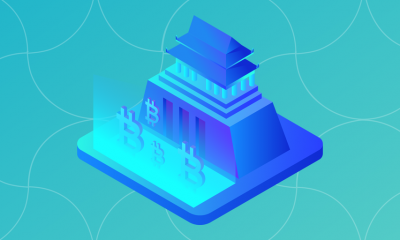
 Cryptocurrency1 week ago
Cryptocurrency1 week agoWho is Satoshi Nakamoto, The Creator of Bitcoin? – Crypto News
-

 Business7 days ago
Business7 days agoElon Musk’s DOGE Launches Probe into US SEC, Ripple Lawsuit To End? – Crypto News
-
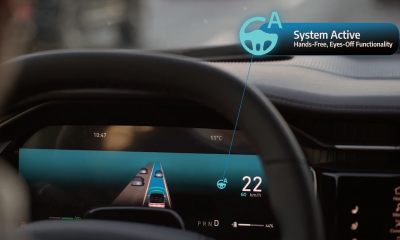
 Technology4 days ago
Technology4 days agoStellantis Debuts System to Handle ‘Routine Driving Tasks’ – Crypto News
-

 Cryptocurrency1 week ago
Cryptocurrency1 week agoTether Acquires a Minority Stake in Italian Football Giant Juventus – Crypto News
-

 Cryptocurrency1 week ago
Cryptocurrency1 week agoCrypto narratives as we await next market move – Crypto News
-
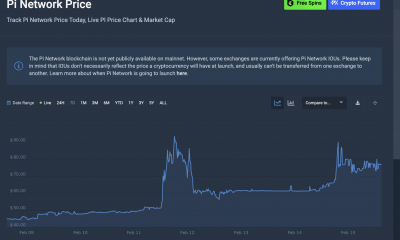
 Business1 week ago
Business1 week agoHow Will It Affect Pi Coin Price? – Crypto News
-

 Business7 days ago
Business7 days agoWhat Will be KAITO Price At Launch? – Crypto News
-

 Blockchain7 days ago
Blockchain7 days agoXRP Set To Outshine Gold? Analyst Predicts 1,000% Surge – Crypto News
-

 Technology6 days ago
Technology6 days agoLuminious inverters for your home to never see darkness again – Crypto News
-

 Business6 days ago
Business6 days agoWhales Move From Shiba Inu to FXGuys – Here’s Why – Crypto News
-

 Technology1 week ago
Technology1 week agoFactbox-China’s AI firms take spotlight with deals, low-cost models – Crypto News
-

 Technology1 week ago
Technology1 week agoCyber fraud alert: Doctor duped of ₹15.50 lakh via fake trading app; here’s what happened – Crypto News
-

 Blockchain1 week ago
Blockchain1 week agoIs BTC Heading For $150K Rally? – Crypto News
-

 Technology1 week ago
Technology1 week agoWeekly Tech Recap: JioHotstar launched, Sam Altman vs Elon Musk feud intensifies, Perplexity takes on ChatGPT and more – Crypto News
-

 Technology1 week ago
Technology1 week agoBest gaming mobiles under ₹20,000 in February 2025: Poco X6 Pro, OnePlus Nord CE 4 Lite and more – Crypto News
-

 Cryptocurrency1 week ago
Cryptocurrency1 week agoGameStop Stock Price Pumps After Report of Bitcoin Buying Plans – Crypto News
-

 Technology1 week ago
Technology1 week agoWhat will it take for India to become a global data centre hub? – Crypto News
-

 Technology1 week ago
Technology1 week agoChatGPT vs Perplexity: Sam Altman praises Aravind Srinivas’ Deep Research AI; ‘Proud of you’ – Crypto News
-

 Blockchain1 week ago
Blockchain1 week agoNEAR Breaks Below Parallel Channel: Key Levels To Watch – Crypto News
-

 Blockchain1 week ago
Blockchain1 week agoWill BTC Rebound Or Drop To $76,000? – Crypto News
-

 Blockchain1 week ago
Blockchain1 week agoXRP Price Settles After Gains—Is a Fresh Upside Move Coming? – Crypto News
-

 others1 week ago
others1 week agoWTI price bullish, according to FXStreet data – Crypto News
-

 Metaverse1 week ago
Metaverse1 week agoHow AI will divide the best from the rest – Crypto News
-

 Business7 days ago
Business7 days agoThese 3 Altcoins Will Help You Capitalize on Stellar’s Recent DIp – Crypto News
-

 Cryptocurrency6 days ago
Cryptocurrency6 days agoHayden Davis crypto scandal deepens as LIBRA memecoin faces fraud allegations – Crypto News
-

 Cryptocurrency1 week ago
Cryptocurrency1 week agoSomeone Just Won $100K in Bitcoin From a $50 Pack of Trading Cards – Crypto News
-

 Technology1 week ago
Technology1 week agoSay goodbye to tangled cables: Stylish magnetic power banks keep your iPhone or Android charged on the go – Crypto News
-
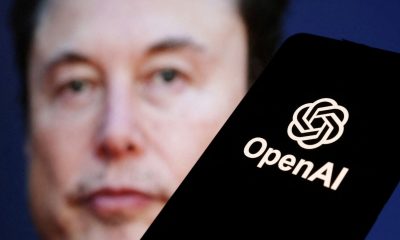
 Technology1 week ago
Technology1 week agoOpenAI board unanimously rejects Musk’s $97.4 billion takeover bid: ‘Not for sale’ – Crypto News
-

 Technology1 week ago
Technology1 week agoGrok 3 is coming! Elon Musk announces launch date, promises ‘smartest AI on Earth’ – Crypto News
-

 Technology1 week ago
Technology1 week agoUnion Minister Ashwini Vaishnaw to launch India AI Mission portal soon, 10 companies set to provide 14,000 GPUs – Crypto News
-

 Business7 days ago
Business7 days agoWhy Ethereum (ETH) Price Revival Could Start Soon After Solana Mess? – Crypto News
-

 Business7 days ago
Business7 days agoMarket Veteran Predicts XRP Price If Ripple Completes Cup and Handle Pattern – Crypto News
-

 others7 days ago
others7 days agoForex Today: What if the RBA…? – Crypto News
-

 others7 days ago
others7 days agoUS Dollar struggles to gather traction on quiet Monday – Crypto News
-

 Blockchain1 week ago
Blockchain1 week agoXRP Bullish Pennant Targets $15-$17 But Confirmation Is Required – Crypto News
-
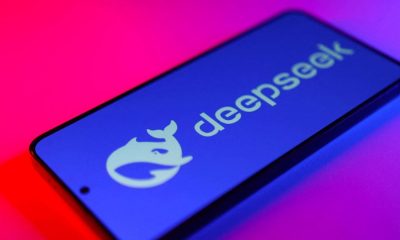
 Technology1 week ago
Technology1 week agoSouth Korea removes DeepSeek from app stores, existing users advised to ‘service with caution’ – Crypto News
-

 Blockchain1 week ago
Blockchain1 week agoBitcoin Price Falls Short Again—Is a Deeper Decline Coming? – Crypto News
-

 Metaverse6 days ago
Metaverse6 days agoGrok 3 launch LIVE Updates: Elon Musk’s xAI to unveil ‘smartest AI on Earth’ today – Crypto News
-

 Cryptocurrency6 days ago
Cryptocurrency6 days agoBitcoin Sees $430M in Outflows as Market Responds to Fed’s Hawkish Stance – Crypto News


















